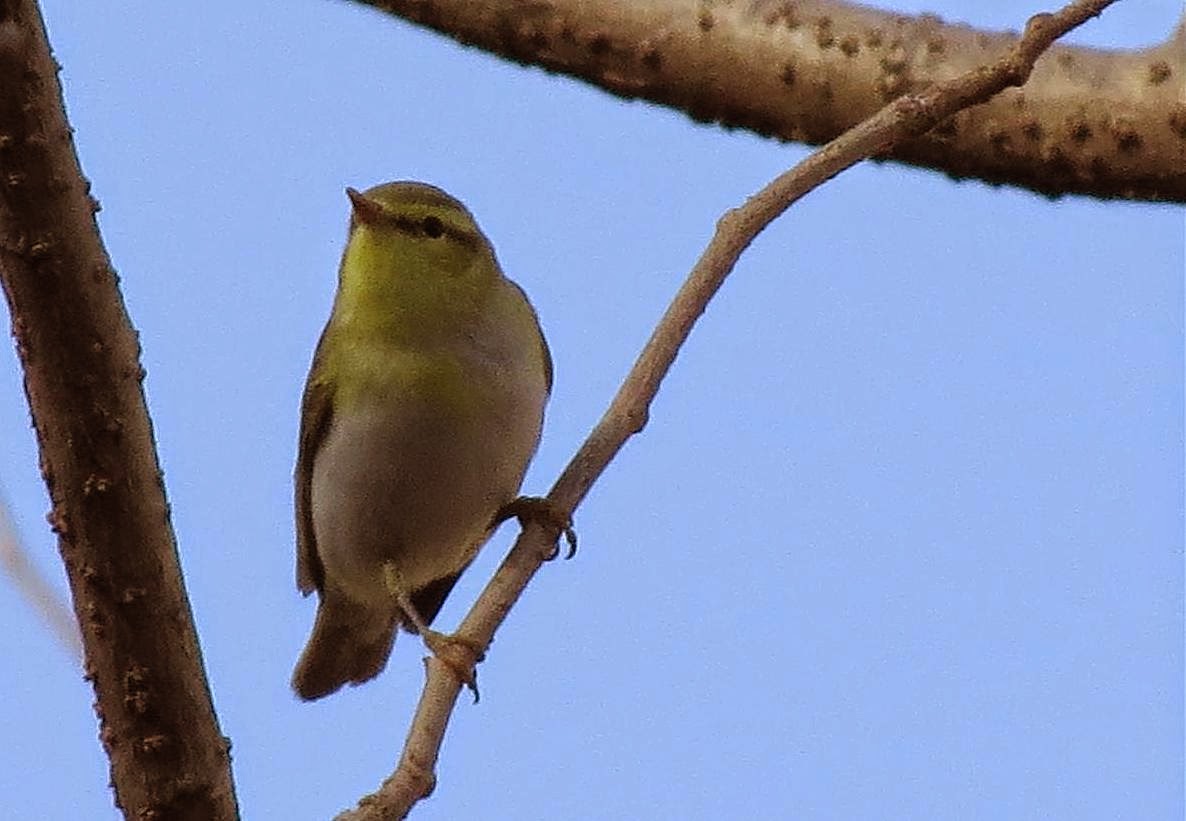Ayn Tebraq has lots of flowing water with adjacent trees. Ayn Athum is different. It is a sheer cliff face which becomes a waterfall in the monsoon season but otherwise is mostly just damp with a few drips. it is an interesting habitat though.
On Monday afternoon I visited the wadi and went to wadi Tebraq first.
Here I found a wintering wood warbler. This most uncommon. Virtually all wood warbler winter in tropical Africa. Very few travel through Arabia but those which do either have to hazard a long sea flight to East Africa or make do.
wood warbler at Ayn Tebraq on December 15th
I love seeing detailed maps which purport to accuracy! I suppose the map bloew is more than 99% accurate but would mislead people into thinking that wood warbler doesn't migrate or winter at all in Arabia.
source: wikipedia
I note that two UAE birders saw one two weeks before at Ayn Hamran and I observed one there in October which may well have continued with a hazardous migration.
second picture of a wood warbler
song thrush
As with all ayns there were African paradise flycatcher and Ruppells weaver around. Sandpipers are common too. This time I saw green sandpiper.
Ayn Tebraq
Ayn Tebraq is a beautiful spot which isn't visited as much even by locals. I wonder if its because there are more mosquitoes, one of which bit me.
green sandpiper
Light was fading but I decided to switch to Ayn Athum anyway. I am ever hopeful of seeing golden winged grosbeck and will look for it anywhere in the hills.
Abyssinian white eye
African paradise flycatcher
An African paradise flycatcher was seen which appears to be a male just starting to grow its tail longer.
grey wagtail
Despite the lack of water, it was damp enough to attract grey wagtail. I counted three there.
Shining sunbird
Some birds breed in spring which is late February and March here. Others such as Ruppells weaver breed in the khareef (monsoon) season. Shining sunbird is looking very much in breeding plumage at the moment. I don't know whether it will breed a little bit earlier than spring. I'll watch out for this.


.jpg)








No comments:
Post a Comment